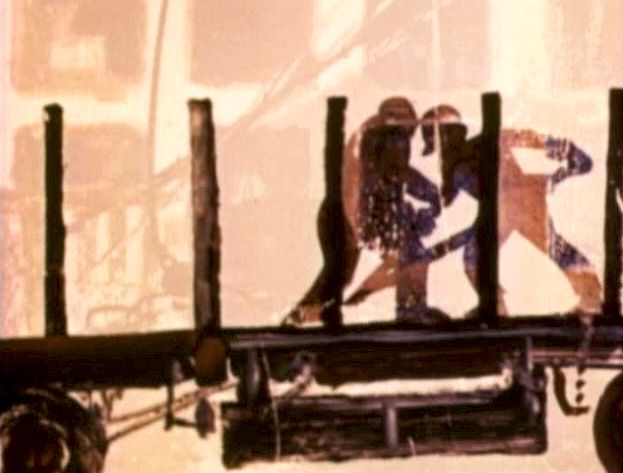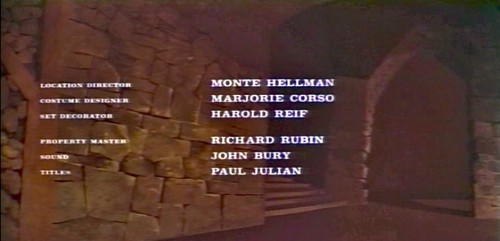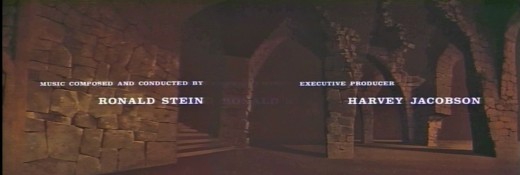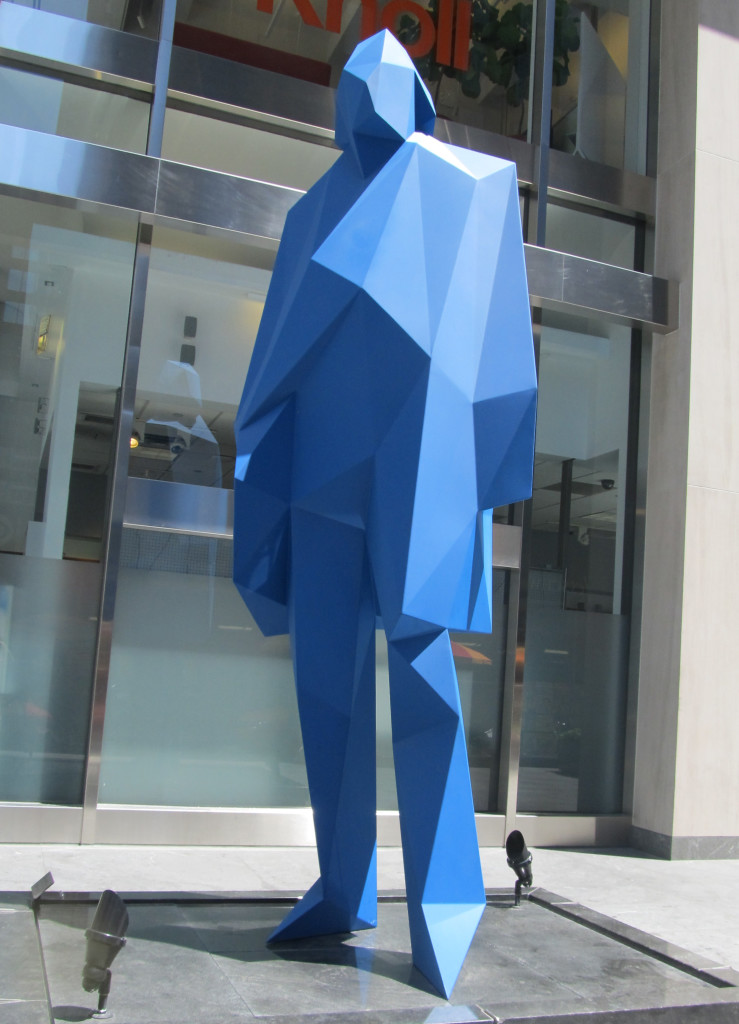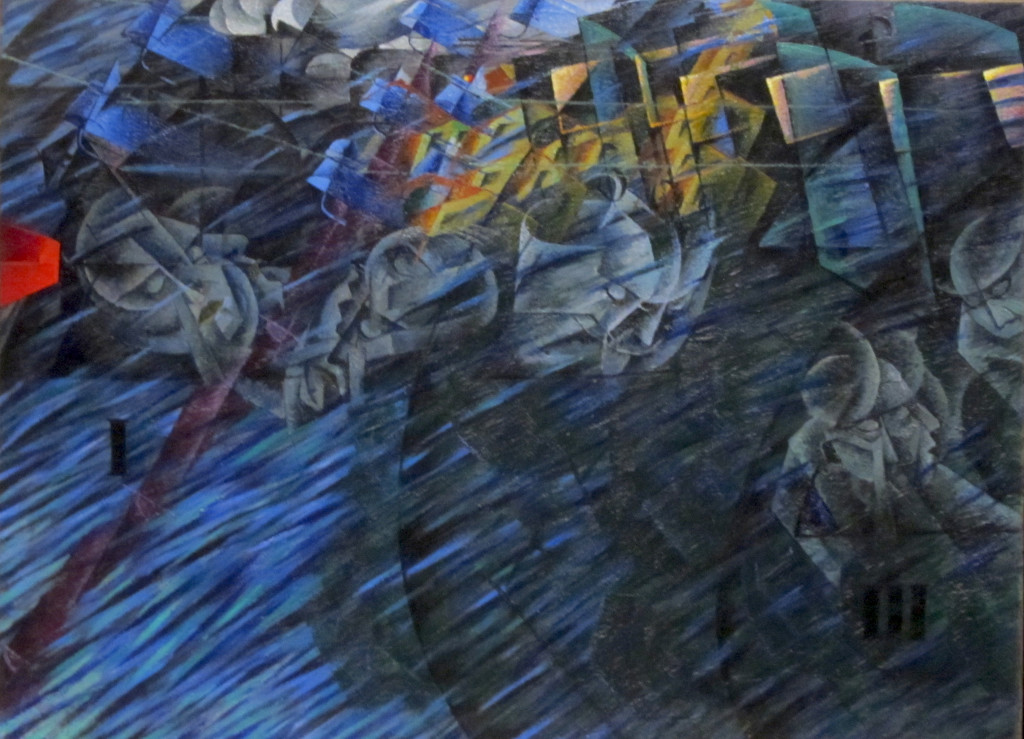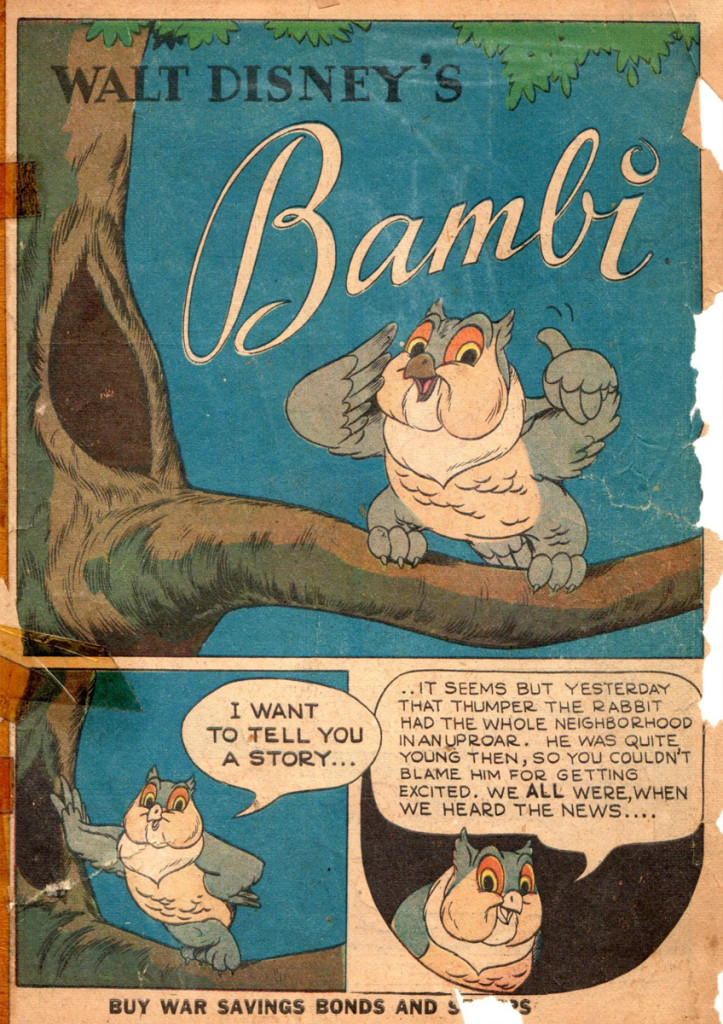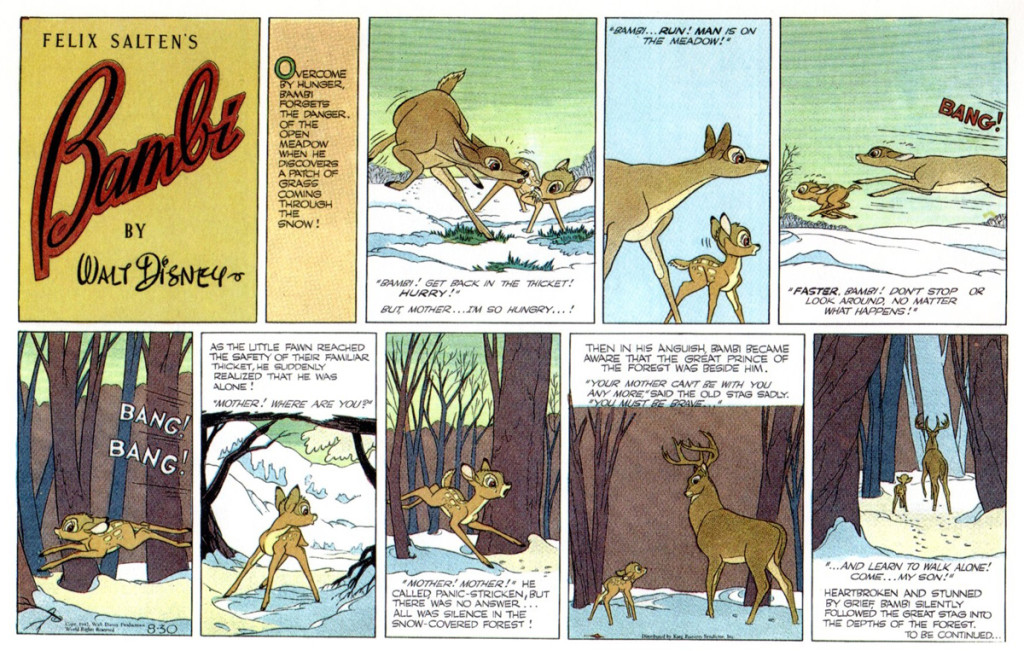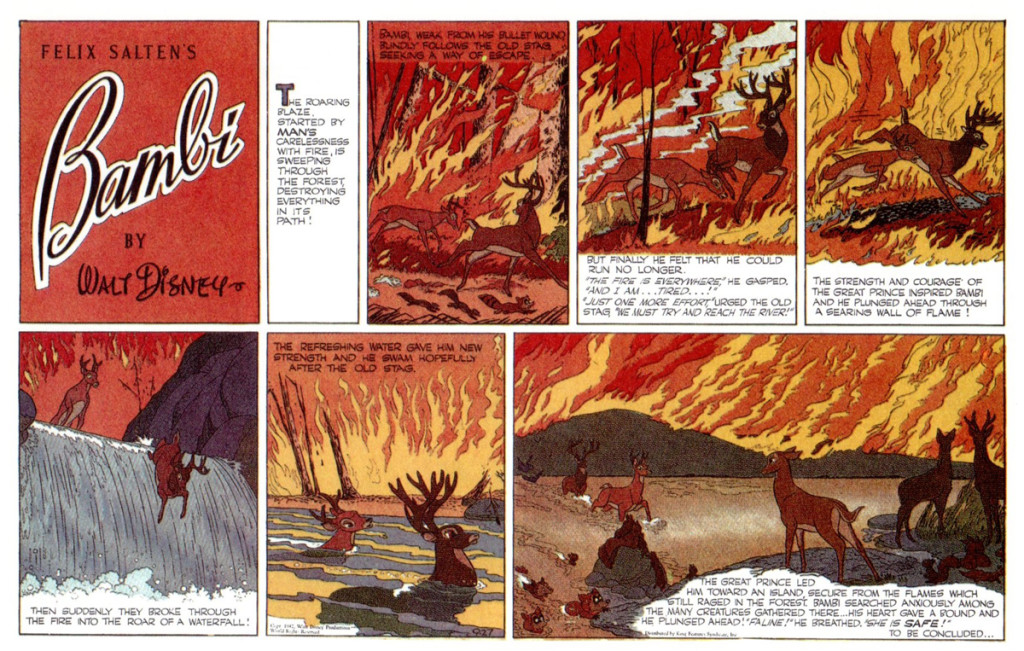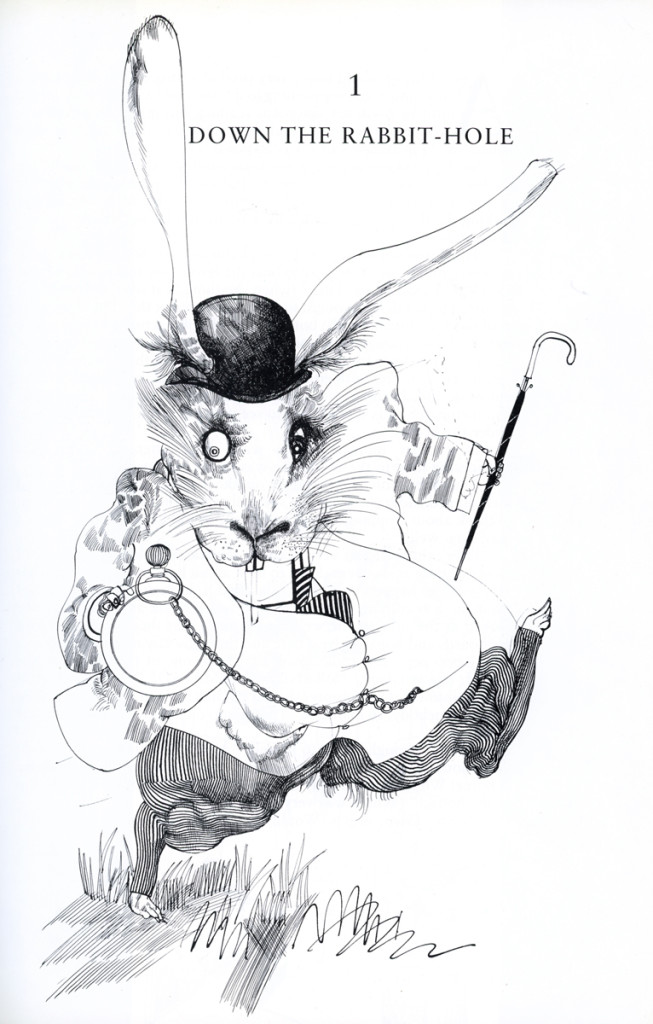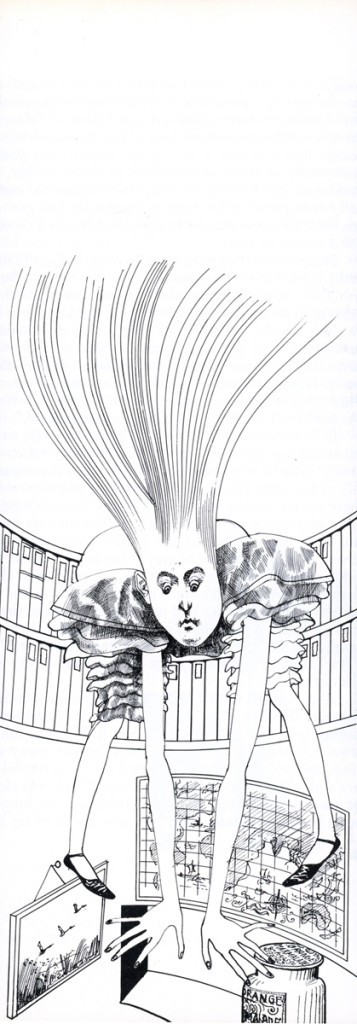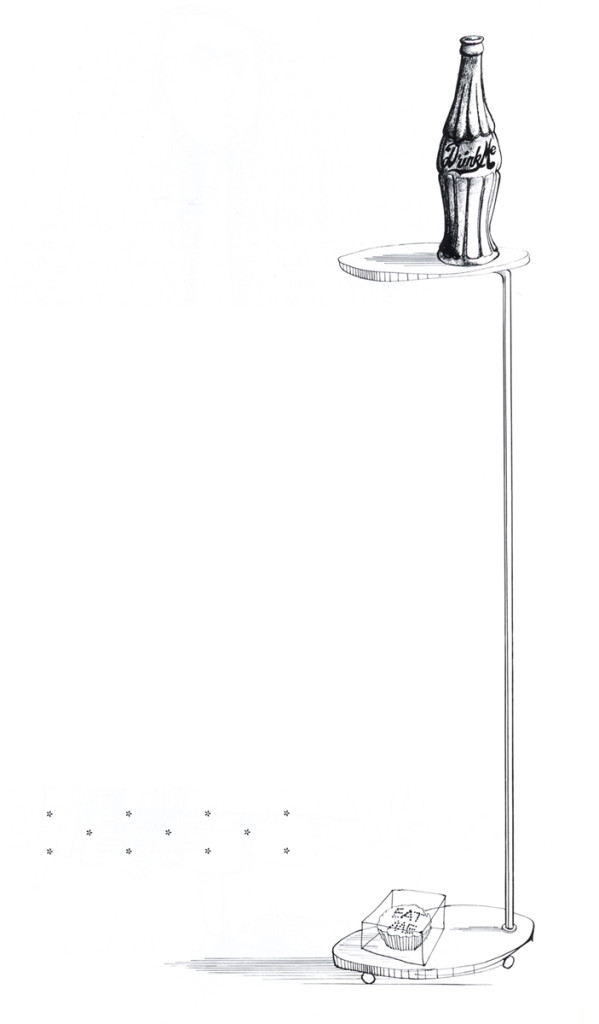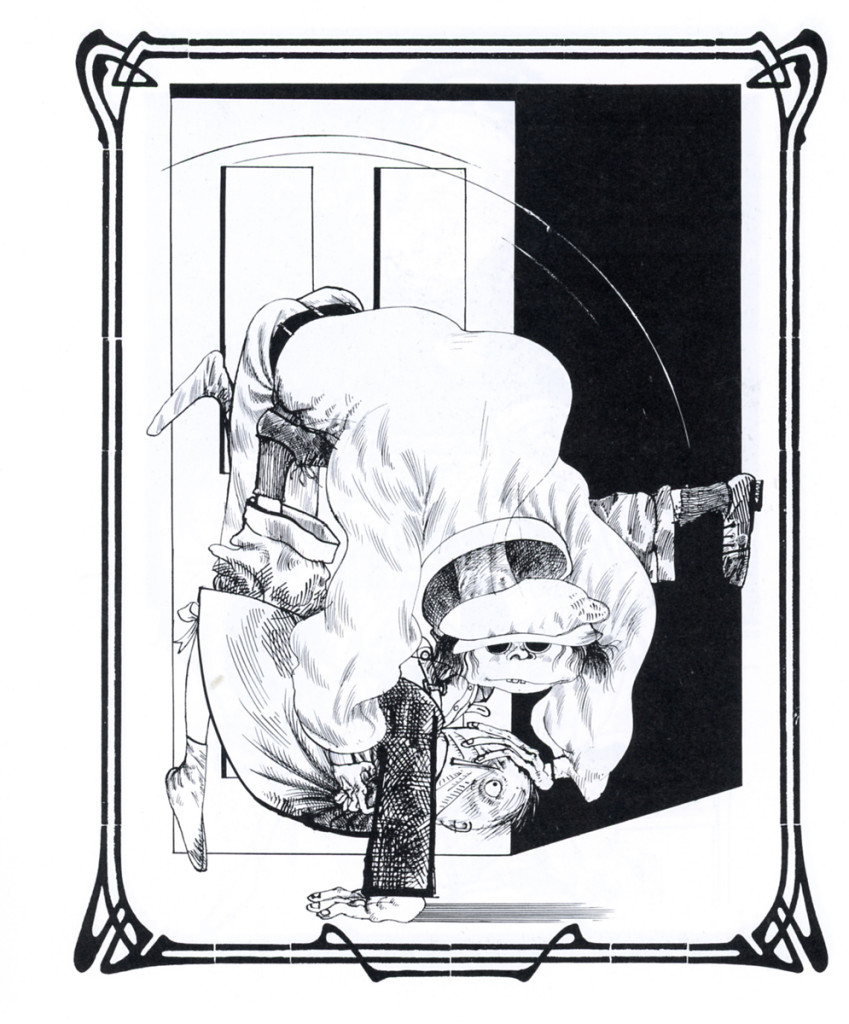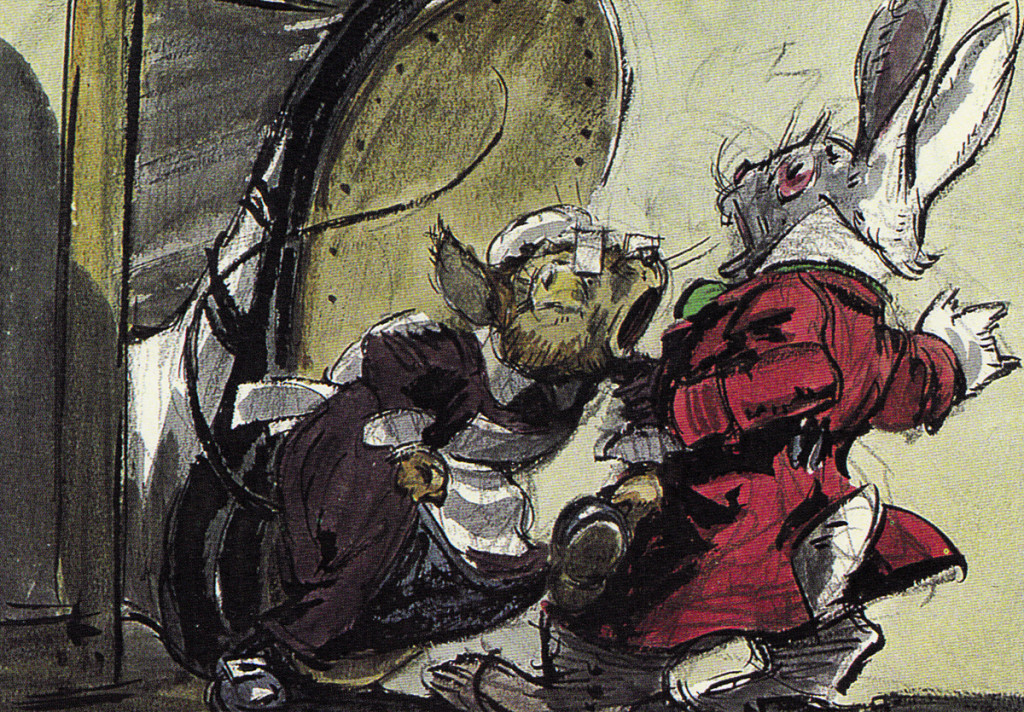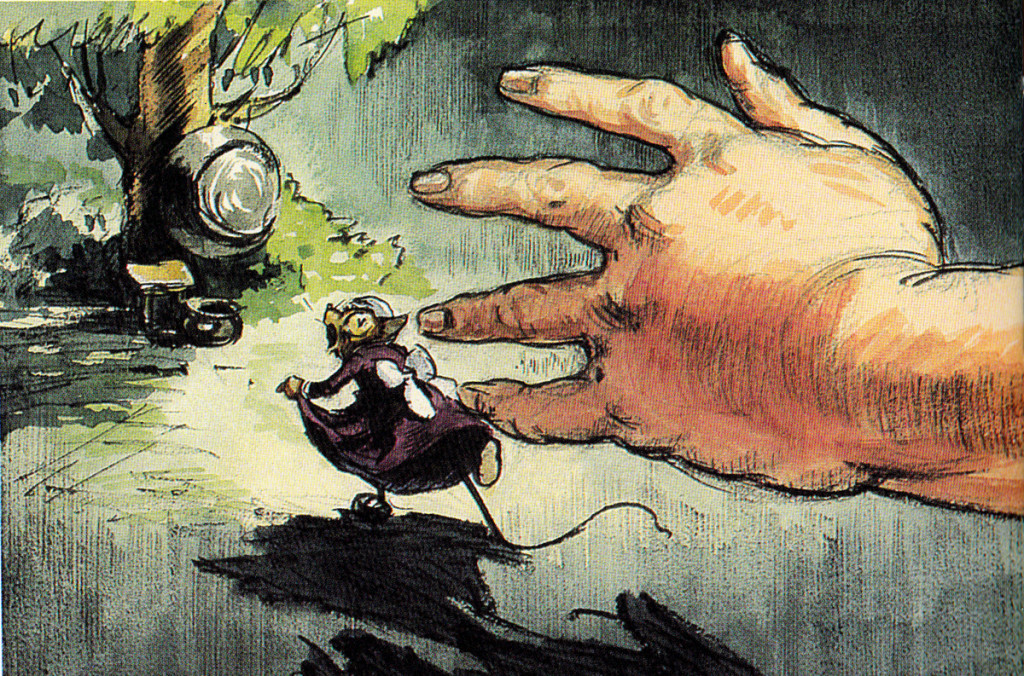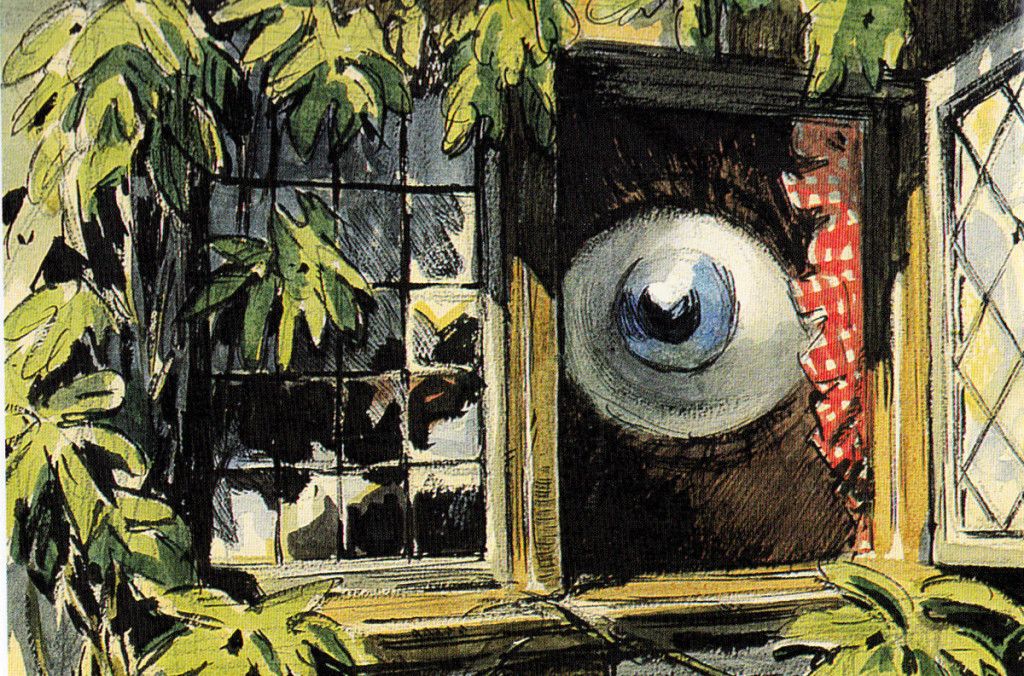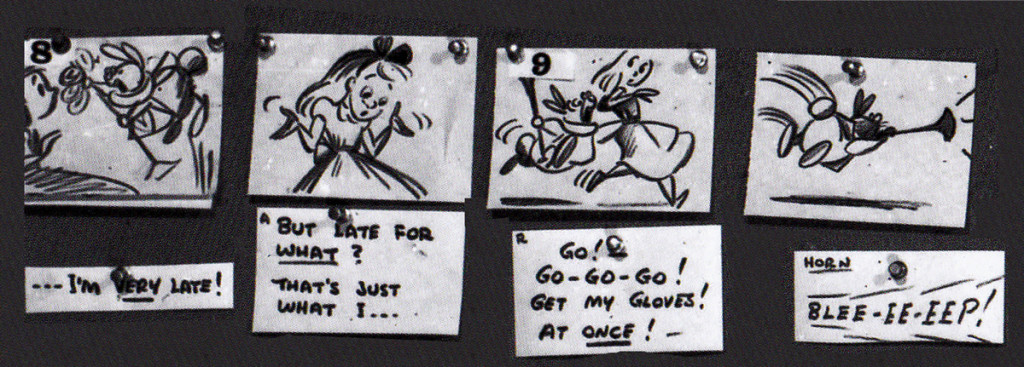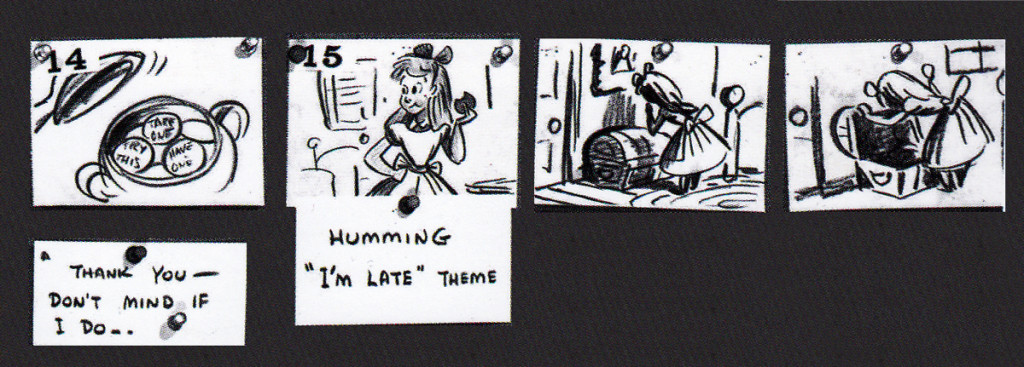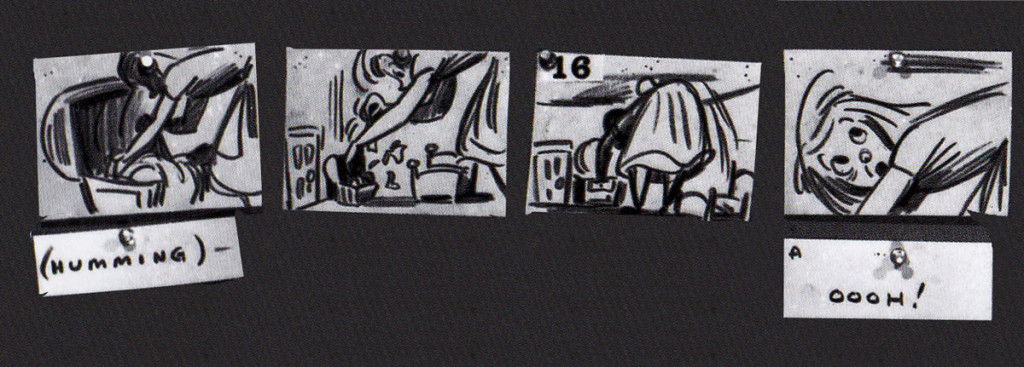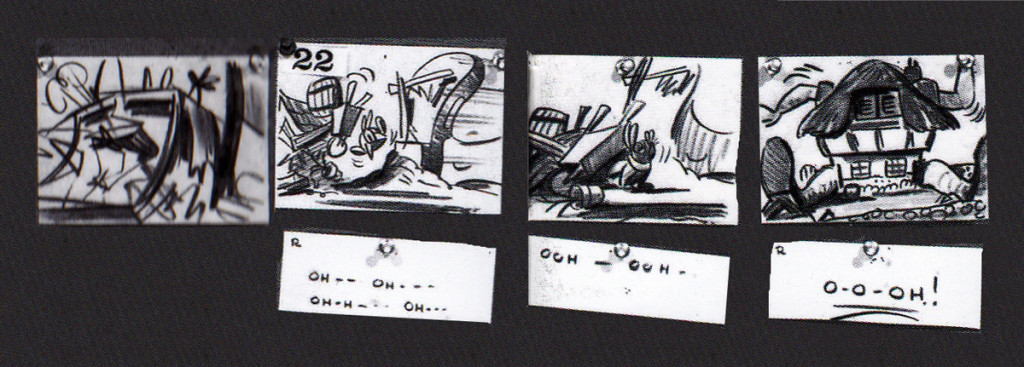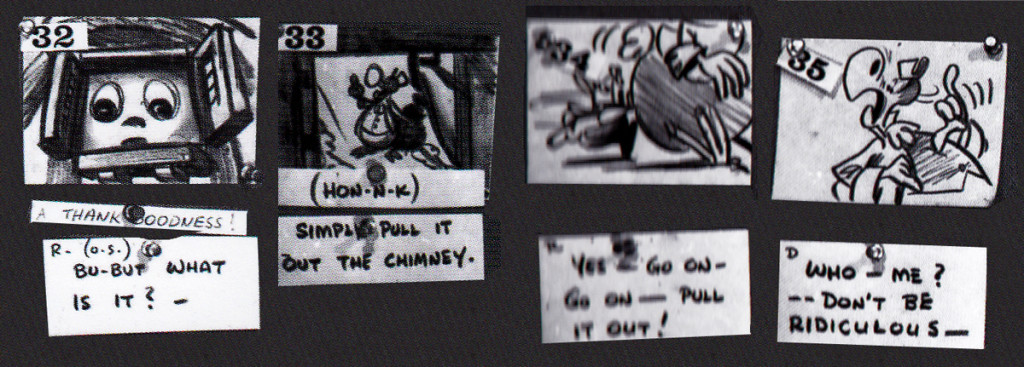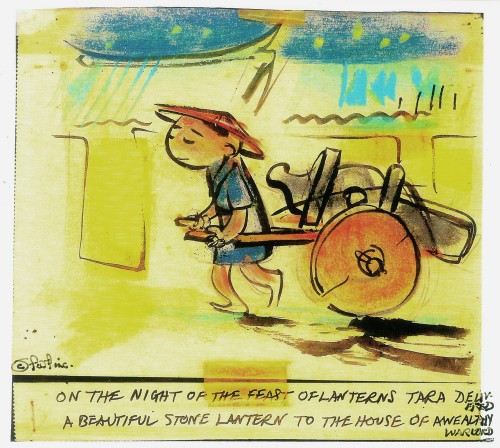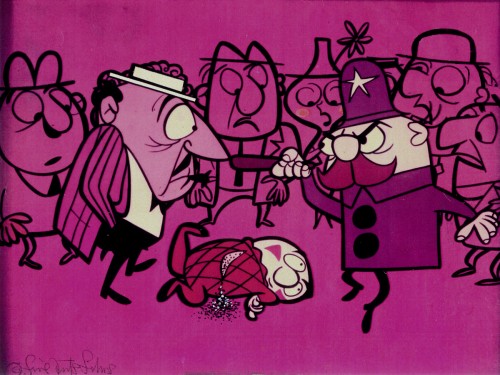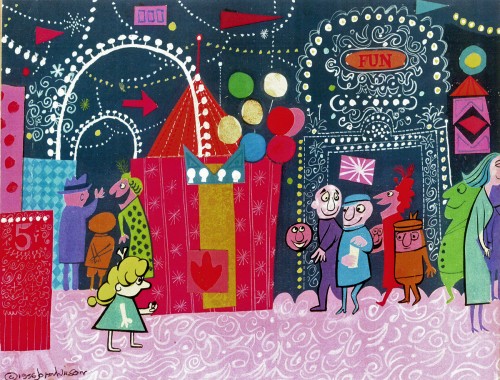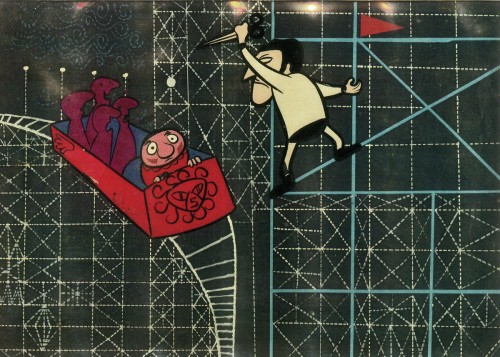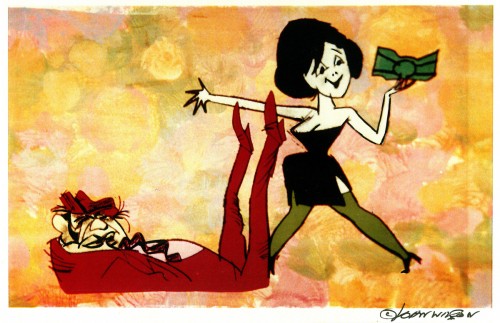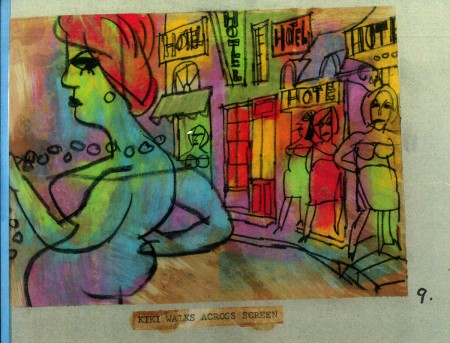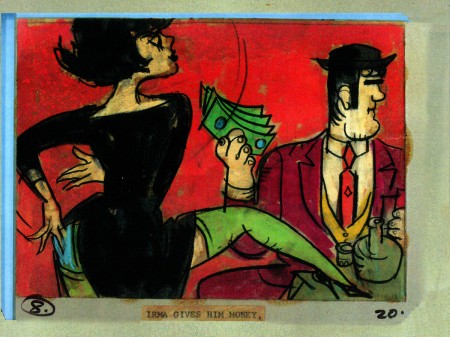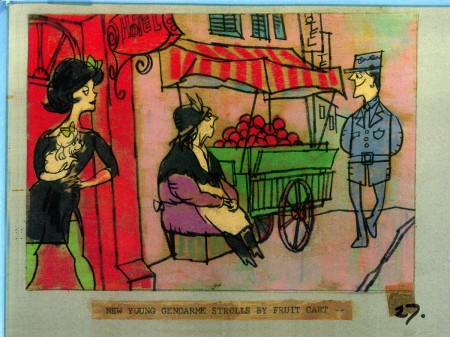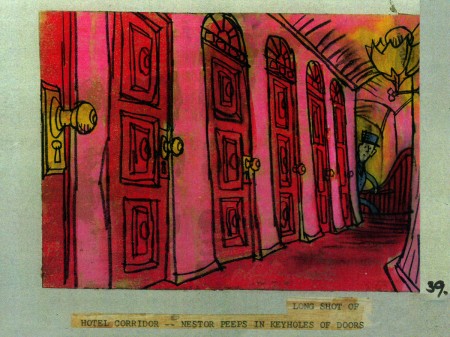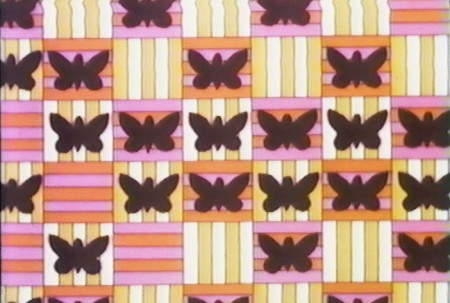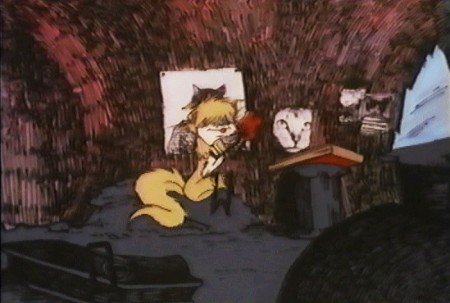Category ArchiveCommentary
Commentary 13 Jul 2013 03:50 am
Friends

Not Doing Too Well, My Friend
- Recently my friend Lou Scarborough was in New York. We spent about a half dozen lunches together while he was here and had a lot of laughs talking about the past and some not so happy moments, as well, talking about the present. Our last lunch, before he had to leave town had to be cancelled and we missed it. I was glad to have been able to bring him to an Academy screening where we got to share some thoughts about Blue Sky’s Epic. We also saw Goro Miyazaki’s From Up on Poppy Hill one afternoon at the IFC theater. I’m glad we got to see one film we both enjoyed, somewhat.
Now I’ve received a letter from Jerry Beck with some sad information about our friend. Jerry writes:
- Lou came down sick last Wednesday and his friend and roomate, Marc Schirmeister, took him to the hospital. He was operated on last Sunday for an obstruction in his digestive tract – that’s when they discovered the cancer. Lou has cancer of the prostate, colon and liver. He is at the UCLA Olive View Hospital in Sylmar, California.
Lou’s brother Cecil is arriving at LAX this afternoon, and will battle the rush hour traffic to get to the hospital.
Lou is stable but unconscious (they are keeping him sleeping because of the pain). He’s in intensive care in room 5B North in bed #9. The Nurse is Nurse Jerman. It doesn’t look good. (If you need any of the phone numbers, I can probably get them to you.
Lou did, at one time, have a blog where he left a lot of pencil art. If you’re up to reminiscing over Lou’s distinctive style of cartooning you can go to Scarboropolis.
Coming to NY Loaded with Cartoons
- Speaking of Jerry Beck, he will soon be in New York and is planning a number of screenings, which as always will be interesting. One, scheduled for July 28th will be held at the BAMcinematek in Brooklyn, NY. This is dome under the auspices of the MP Academy and will include some rarely screened films:
Munro Dir. Gene Deitch (1960)
Ersatz Dir. Dusan Vucotic (1961)
The Hole Dir. John Hubley (1962)
The Pink Phink Dir. Friz Freleng & Hawley Pratt (1964)
Herb Alpert & The Tijuana Brass Double Feature Dir. John Hubley (1966)
The Box Dir. Fred Wolf (1967)
I am scheduled to be on a panel at 7pm that includes Jerry Beck, Emily Hubley and J.J. Sedelmaier. Presumably we’re there to talk about the films.
Computer Bites
I’ve recently been the victim of the big corporation, Verizon, doing all sorts of play with my telephone and internet service. My poor wife, Heidi, can’t believe how horrendous this 3 week period was for me. It was debilitating, to say the least, but none of my films are damaged in the process. I can’t even imagine that . . . well, maybe I can.
 Signe Baumane has heart-stopping, thrilling stories about her attempts to bring her feature film, Rocks in my Pockets, to completion. The film is about depression, can you imagine the making of the film about depression being the cause of the depression itself? She talks about the computers poor animators have to work with (not large corporations but those used by the likes of many of us) have to work with in making these films, and I can imagine worse than she’s been through, but thrilled to know she’s nearing the end without any large
Signe Baumane has heart-stopping, thrilling stories about her attempts to bring her feature film, Rocks in my Pockets, to completion. The film is about depression, can you imagine the making of the film about depression being the cause of the depression itself? She talks about the computers poor animators have to work with (not large corporations but those used by the likes of many of us) have to work with in making these films, and I can imagine worse than she’s been through, but thrilled to know she’s nearing the end without any large  organizations tearing into her movie – yet. Take the few minutes to read her recent blog post about her film. It’s a good piece of writing with lots of clear warnings for all of us “small timers” who are still making films one frame at a time.
organizations tearing into her movie – yet. Take the few minutes to read her recent blog post about her film. It’s a good piece of writing with lots of clear warnings for all of us “small timers” who are still making films one frame at a time.
This is a subject that hasn’t come up in discussions with other independent animators doing their own feature films on home equipment. I’ll look forward to anything from Bill Plympton or Elliot Cowan on their films.
Read Computers on the Dots about her film, Rocks In My Pockets.
Seen Some Films
- Last week I was actually looking forward to The Lone Ranger and very disappointed when it was played more for gags than seriousness. Gore Verbinski was going more for Pirates of the Caribbean than Rango. He should stick to the animation. I liked Johnny Depp in his part as Tonto and the way he represents his half of the partnership. But for the “Masked Man” they played for gags making him the comedy star of the story. Surely there was a good partnership film in there. Instead of Mel Gibson and Danny Glover in Lethal Weapon we could have easily had the Masked Man and Tonto. What’s the point? Why talk more about another failed film?
- This week, I saw three films; two were live action and adult, one was childish and for the most part animated by cgi EFFX people starring cartoon humans. Two were good.
Fruitvale Station was a first film by director/writer Ryan Coogler. It was about a young black man trying hard to change his life and live properly in America. Of course, it ended with his being killed in Oakland. He’s tried to raise his daughter well; he’s tried to go the straight and narrow by discarding the drugs he’s expected to sell (even though that sale would have been very easy and profitable), and he’s tried to be a good boyfriend to his potential mate and his mother. The story works hard not to make his a symbol but the real story they’re telling pushes hard to do the obvious. The director does a good job with a small cast of excellent actors led by the young star Michael B. Jordan. It’s an excellent and gripping film that deserves your attention.
The director, and two of its young stars answered questions for the NY Academy’s members. It was an excellent evening built around a fine film.


The well-known Danish director Thomas Vinterberg builds a quiet and subtle movie about a young teacher who has been trying to develop a good life in the small Danish community where he lives. He is named a child predator by his best friend’s daughter. The girl talks about images she’s seen on her brother’s friend’s laptop computer. Too quickly the staff at the school accept the girl’s words as truth and make it almost impossible for her to retract her confused accusations. The girl barely knows what she’s talking about, yet the entire community comes out against the innocent teacher. It’s a haunting film very well played and done in a low key manner. Whereas the story would probably most easily be played out through anger, Vinterberg merely has his teacher try hard to defend himself against the obviously non-true attack. When all seems to die down and settle in the teacher’s favor at the film’s end, it becomes clear that the story will never come clear. There will always be finger-pointing and hostilities for the rest of the lives in this small village.
It’s a very charged film, and was pleasantly covered by a short Q&A after the movie. A good experience for the best film of the week.
- Finally last night the overblown loud crash from the theater’s screen gave us the latest tiresome film from Guillermo del Toro. It’s hard to know who’s on the good or the bad side and if there is one. The film just didn’t stop coming at you. After 140 minutes, I’d had enough and left the theater. There was nothing more to learn. This is everything I find wrong with movies, and the deadening computer has put us at the center of the problem. After seeing Pan’s Labyrinth I came back to give Del Toro a second and third chance of entertaining me, but he never quite led up to his part of the deal. The Hellboy films left me flat, and the endless monsters and loud soundtracks left me cold.
Commentary 09 Jul 2013 01:41 pm
Sorry, no service just now.
Until I get my service back from Verizon, I won’t be having much of a blog, so I’m sorry that it’ll be down for a while. They keep telling me, day to day, that it’ll be resolved today. But that hasn’t been happening in the past three weeks, and I’m still without my internet.
All I can ask is that you have a bit of patience; it’s taking all the patience I have to deal with it. That’s about all I know.
Commentary &Frame Grabs &Illustration &Models &Title sequences 08 Jul 2013 02:27 am
Paul Julian’s The Terror titles
After posting the book, Piccoli, a week or so ago, I’ve grown more interest in Paul Julian‘s work. He’s known predominantly for the Bgs he did at Warner Bros and the art direction he did on The Tell Tale Heart. However, there’s more film work he did independently.
The Hangman was a short film he did with co-director Les Goldman. Maurice Ogden’s poem is read by Herschel Bernardi in a very earnest tone. The artwork by Julian absolutely saves this film which was nominated for the Oscar.
Roger Corman also used Paul Julian for a number of opening title sequences for the low budget films he did in the 60s. I’m going to try pulling some frame grabs from a number of these title sequences so that I can place some focus on Julian’s work in these forgotten films.
I start here with The Terror a film Starring Boris Karloff and Jack Nicholson. Julian uses a couple of pieces of artwork that he works over the course of the sequence with lots of lateral camera moves. Quite expressive work, though certainly not on a par with Tell Tale Heart.
 1
1(Click any image to enlarge.)
 6
6
Starts at the bottom and pans up.
You can watch a grayed-out version of this video on YouTube. The credits come on about a minute into it.
Swamp Women’s title sequence will follow soon.
Commentary &Photos 07 Jul 2013 06:35 am
4th of July MoMA
 1
1On July 4th I photographed some mesh that was constructed
to look like some faux building which would protect some
other buildings on Park Avenue and 28th Street.
 5
5
Then I shot some real mesh which led us to the Museum of Modern Art.
 9
9
Me, looking up at the ads overhead.
Disney’s “Planes”. Same thing as “Cars”
Only planes fly and are looking for more money than Cars do.
 12
12
Heidi had heard that the fireworks would
work off the Empire State Building’s lite show.
 13
13
So we got up close and personal by going
up to our rooftop. Four flights off the ground.
 14
14
But the Empire State Lights were just electric,
and they couldn’t spark anything.
 15
15
We watched the electric knights while the fireworks lights
just went snap and crackle and didn’t do any kind of burning
- not even to electric lights. Snap.
 16
16
the MoMA was more fun though the colors seemed similar.
As a matter of fact from where I was situated I couldn’t even SEE
the photographed lights. Big deal.
 19
19
Like any trip to the MoMA, the pictures were the best part.
 21
21
Nothing like ending with the Futurists.
Especially in the present.
Action Analysis &Animation &Articles on Animation &Commentary 07 Jul 2013 05:00 am
Two Tier Tyre
 – Somehow always touching in the back corners of the recesses of my mind is the work of Jim Tyer. He’s possibly the most well-known animator in the medium’s short history. The guy has done such eccentric work that it’s impossible to find someone comparable. Even to those who don’t realize they’re mimicking his work, they would be surprised to learn that they’re doing Jim Tyre and not Tex Avery or Bob Clampett and Rod Scribner.
– Somehow always touching in the back corners of the recesses of my mind is the work of Jim Tyer. He’s possibly the most well-known animator in the medium’s short history. The guy has done such eccentric work that it’s impossible to find someone comparable. Even to those who don’t realize they’re mimicking his work, they would be surprised to learn that they’re doing Jim Tyre and not Tex Avery or Bob Clampett and Rod Scribner.
A number of things have been written about Jim Tyer. Interestingly, it’s predominantly the same few people that seem to be writing and usually the same bits are repeated.
Chief among sites that offers bits and comics among their offerings, is Kevin Langley‘s Cartoons Comics and Model Sheets. This blog first caught my attention with plenty of Mr. Tyer’s imaginative drawing. Not quite rough, not quite gesture drawing, and certainly not rendering. The best one could say was Wacko.
You see I’d been an ardent enthusiast of Mr. Tyer’s work for years, and here they were – stills. Plenty of them. So there were lots and lots of links. You can’t really write lots of words when processing Jim Tyer’s material. As a matter of fact, I can only think of one pwerson who did that job and did an impeccable turn of it. Mark Mayerson.
As a matter of fact, you might want to stop reading here and go to Mark’s comments, now. He had two key things to say and no one else has had much more to say to me. It’s a paper he wrote in 1990 and with it he had more to say about Jim Tyer‘s work than had anyone else to that date.
I meant for this piece to be much more exhaustive, but the problems I’m having with my internet are annoying. Unfinished pieces have been thrown up as complete. This is one of them, the Provenson piece (though that’s much more finished) made it to post, and others as well. I may quit writing at all until Verizon finally comes to my door to correct my phone service. (I still don’t have an operating phone number after three weeks and my internet is intermittently up and down based on its own whim.)
I apologize for the sloppiness of the whole thing.
Bill Peckmann &Commentary &Daily post 03 Jul 2013 03:59 am
Bambi Comics
I apologize for any problems you’re having with the Splog just now. Verizon is a tough foe who cannot do their job correctly despite the high prices. They promise everything will be in order by Sunday July, 7th. I can only hope and keep trying.
Michael
A couple of days ago I posted some attractive designs that were done in the late thirties/early forties in preparation for the making of the animated feature, Bambi. The drawings were quite beautiful, and they led, without a moment to spare, to Bill Peckmann‘s forwarding some amazing comic strip pages. The Disney studio published an accompanying comic strip for the newspapers.

Bill Peckmann writes:
“our friend Germund von Wowern sends this
front cover of the first Bambi (1942) comic book.
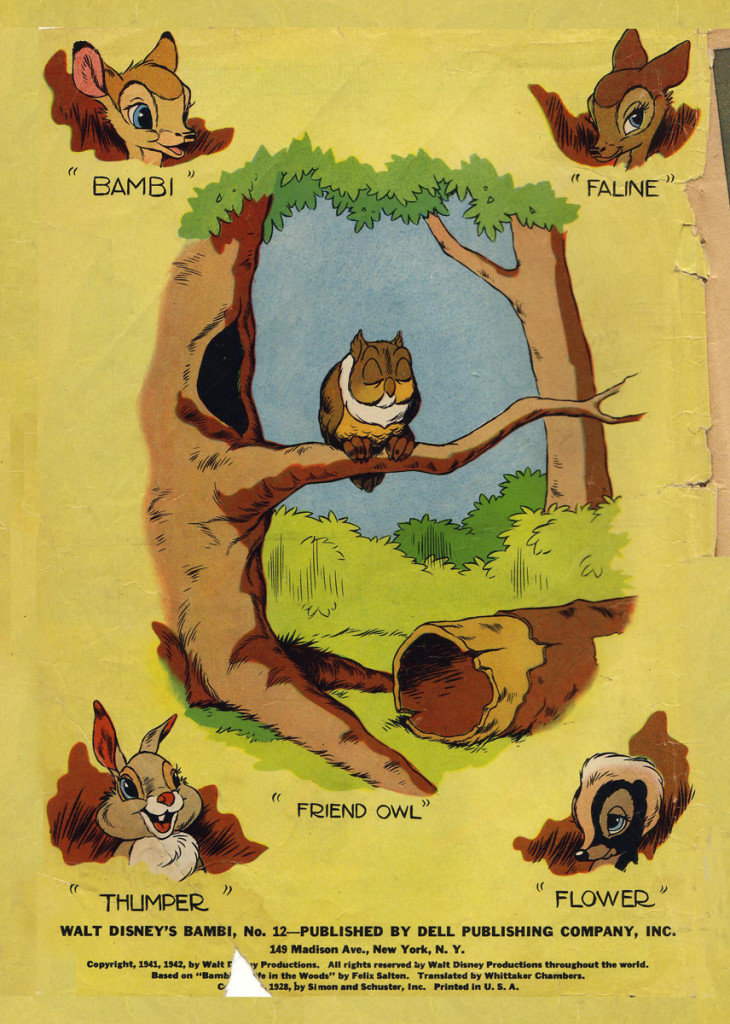
And he sends:
. . . the inside front cover (which was also
in full color in this comic book, something
I’ve never seen, usually inside covers were
two color or B&W).
_______________________
_______________________
Art Art &Books &Commentary &Illustration &Layout & Design &Theater 02 Jul 2013 05:05 am
Alice via Steadman – 1
 I am one of those insane people who is in love with Carroll’s Alice in Wonderland. I also am devoted to Ralph Steadman as probably my favorite illustrator. Steadman has published a glorious version of Alice, and I need no more than show some of the illustrations. Here’s the first in a series of posts of Alice by way of this original artist. Truly different from anyone else’s version.
I am one of those insane people who is in love with Carroll’s Alice in Wonderland. I also am devoted to Ralph Steadman as probably my favorite illustrator. Steadman has published a glorious version of Alice, and I need no more than show some of the illustrations. Here’s the first in a series of posts of Alice by way of this original artist. Truly different from anyone else’s version.
The rumor was that Steadman had seen Meryl Streep performing as the lead on stage in New York, as part of the Joe Papp’s NY Shakespeare Festival, and he’d never been able to get that image out of his head.
I can quite understand since I also saw that very odd and interesting production and still remember it well.
I hope you enjoy this art as much I enjoyed working these images. There’s a lot more, and it will come in parts.
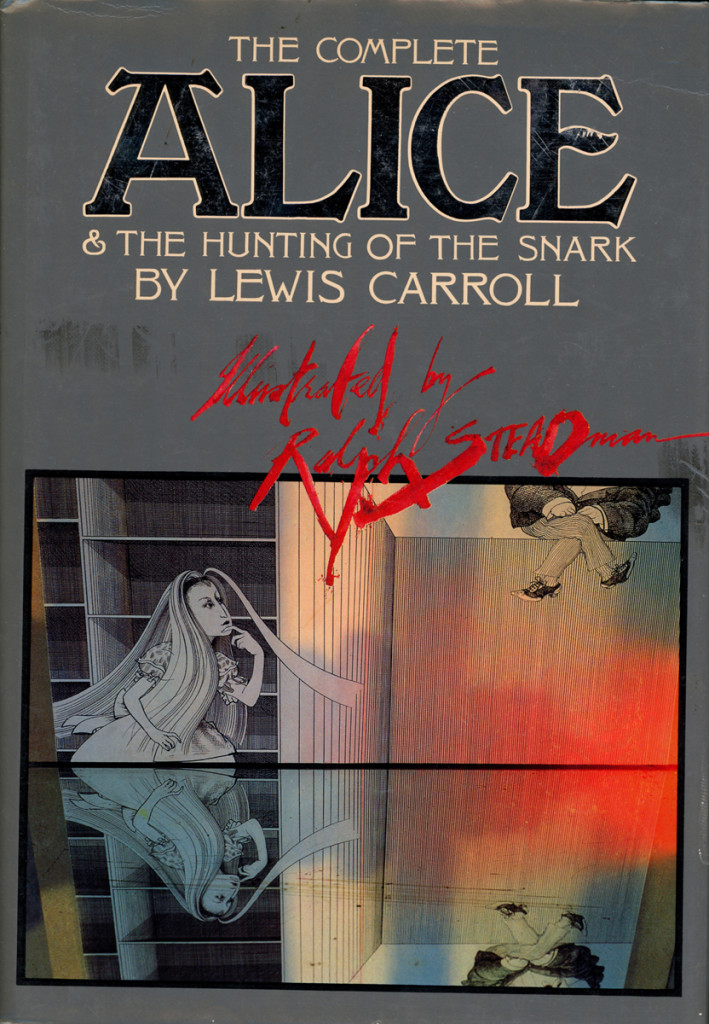
The book’s cover . . . .
Articles on Animation &Books &Commentary &Disney &Illustration &John Canemaker &Layout & Design &Story & Storyboards 01 Jul 2013 07:29 am
Alice Boards
John Canemaker‘s book Paper Dreams: The Art & Artists of Disney Storyboards, is a brilliant work. As an example, take a look at this short piece for Alice In Wonderland.
The animated feature went through a long, slow birth.
The first board, for this sequence, was by David Hall and was done in 1939, the late Thirties. Hall was originally a production artist for Cecil B. DeMille at Paramount Pictures; he worked as an illustrator who was called in to make many delicate watercolors. There was one sequence from the Carroll original which was kept for the final film. In it, Alice gets trapped within a house when, having bitten into a cracker, she suddenly starts getting larger and larger until she fills the white rabbit’s home with her head and overgrown body parts. Many a creature try to pull her from the house.
Here are some of the Hall watercolor images:
 1
1
Following his version, there was an attempt at a script by novelist Aldous Huxley. Done in 1945, this was ultimately abandoned when storyboard continuity artist, Joe RInaldi, came in to make some more cohesive and funny drawings in 1950.
Here’s the full sequence, Rinaldi’s version.
The following is Rinaldi‘s board enlarged for the sake of legibility:
 1
1
I have to give John Canemaker many thanks for allowing me to post these images. His book is a treasure. to those who appreciate the storyboard.
Animation &Animation Artifacts &Articles on Animation &Commentary &commercial animation &Independent Animation &Layout & Design 22 Jun 2013 05:13 am
John Wilson 1920 – 2013
A number of years ago I’d made a short trip to LA. During that visit, a man came up to introduce himself. It was John Wilson. He told me that he had just nominated me for an ASIFA Hollywood Award because he’d loved my work. I’d learned so much from watching Mr. Wilson’s films that it was wonderful to see that the mutual admiration society ran both ways.
John Wilson died yesterday. His son, Andrew, wrote to tell me of it. My feelings go out to the family and am enormously sorry that animation loses another one of its masters.
He was a director, designer and animator about whom I’d done a series of posts on his career. Out of respect for Mr. Wilson, I’d like to post all of those articles together (and hold them there for the entire weekend.)
Hope you’ll enjoy.
1.
Let me start by sharing some bio information about John Wilson and his company Fine Arts Films.
 - John Wilson was born in Wimbledon in 1920. He attended the Royal College of Art and was working by age 18 as a commercial artist with Willings Press Service. In WWII he served with the London Rifle Brigade in African where he was seriously wounded. Recuperating in hospital, he drew many cartoons of which several were printed. Eventually he would recover and get work at Pinewood Studios in the art department where he worked on GREAT EXPECTATIONS and THE THIEF OF BAGHDAD, among other films.
- John Wilson was born in Wimbledon in 1920. He attended the Royal College of Art and was working by age 18 as a commercial artist with Willings Press Service. In WWII he served with the London Rifle Brigade in African where he was seriously wounded. Recuperating in hospital, he drew many cartoons of which several were printed. Eventually he would recover and get work at Pinewood Studios in the art department where he worked on GREAT EXPECTATIONS and THE THIEF OF BAGHDAD, among other films.- By the time he was 25, he was working in animation at Gaumont-British Animation, a newly formed division of J. Arthur Rank’s studio, working under the direction of David Hand on the “Animaland” series starring “Ginger Nut.”
- In 1950 he moved to the United States working in layout and animation at UPA. He found himself working with Bobe Cannon, Pete Burness, Jules Engel, and Paul Julian. Eventually he left for the Disney studio working in Les Clark’s ‘Tinkerbell’ unit on PETER PAN and with Ward Kimball on TOOT WHISTLE PLUNK & BOOM.
- He tried to sell Disney on the film Tara, the Stonecutter, but they weren’t interested. He completed it himself in 1955 using a Japanese style to tell the story. Wilson was impressed with the UPA style of modern art in animation, and that’s the route he took for his personal film. Thus his studio was born, called Fine Arts Films, in 1955. Tara had some success playing theatrically with the successful Japanese feature film, GATE OF HELL by Kinugasa (which had won the Oscar for Best Foreign Film.)

Wilson in Korea with the Bob Hope Tour to entertain the troops.
- This film led to his producing a verion of Stravinsky’s Petroushka for NBC which aired in 1956 as part of The Sol Hurok Music Hour. Notably, Stravinsky, himself, arranged and conducted the shortened version of the score suing the LA Philharmonic Orchestra. The film was designed by John Wilson and Dean Spille with anmation by Bill Littlejohn, Art Davis, and Phil Monroe. Chris Jenkyns, Dean Spille and Ed DeMattia designed the 16 minute show from Wilson’s storyboard.
- Fine Arts Films had produced ‘Journey to the Stars’, a project for the 1961 World’s Fair, an animated voyage through space for NASA, which was seen in 70 mm Cinerama by ten million visitors to Seattle.
- Billy Wilder employed Wilson to do the titles for Irma La Douce after which they did a six-minute trailer for this Jack Lemmon, Shirley McLaine feature. It was all about Parisian prostitutes romping about in Montmartre, and animation could apparently make it acceptable. Artists Ron Maidenberg, Sam Weiss, Sam Cornell and Bob Curtis caught the vivid nightlife of Paris in a sexually charged animated short. It was a huge success in promoting the feature.
- In 1970 Wilson flew to Chicago to see Carol Channing and Eddie Bracken appearing in “archy and mehitabel in Shinbone Alleyâ€. On the basis of this theatrical musical, Wilson bought the screen rights to the book “archy and mehitabel” by George Herriman and began work on an animated feature which was released by Allied Artists in 1971.
- Fine Arts Films was also responsible for many animated commercials as well as weekly music video segments for the weekly CBS-TV series “The Sonny and Cher Show.†The songs included Joni Mitchell’s “Big Yellow Taxi†and Jim Croce’s “Leroy Brown.â€
Here are some storyboard sketches by John Wilson for his initial short film, Tara, the Stonecutter. This film started it all for Wilson.
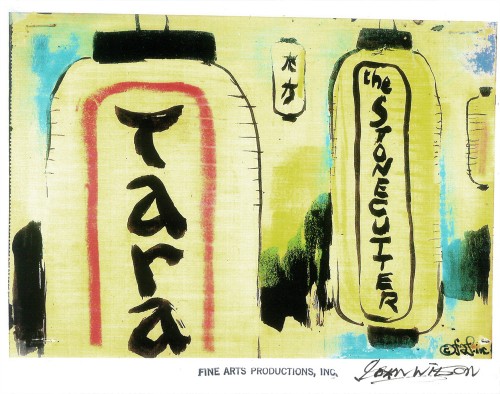 1
1
I haven’t seen the finished film, but I understand that Japanese decorative papers were used in the backgrounds and costumes of the characters.
Here are two press clippings for this film from California papers.
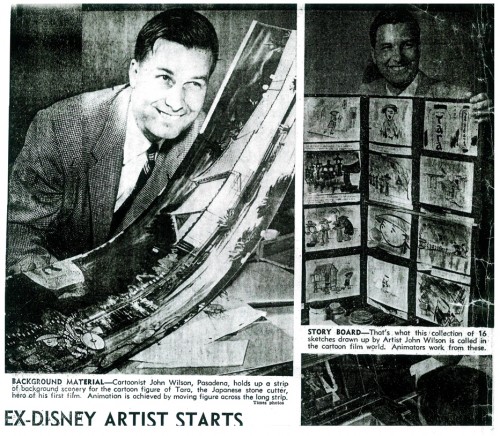
(Click any image to enlarge.)
2.
- After completing the film, Tara the Stone Cutter in 1955, John Wilson and his newly formed company,Fine Arts Films, was able to sell the idea of an animated version of Stravinsky’s Petroushka to NBC. They aired the 16 min. film in 1956 as part of The Sol Hurok Music Hour. Stravinsky, himself, arranged and conducted the shortened version of the score using the LA Philharmonic Orchestra.
The film was designed by John Wilson and Dean Spille; animation was done by Bill Littlejohn, Art Davis, and Phil Monroe. Chris Jenkyns, Dean Spille and Ed DeMattia designed the show from Wilson’s storyboard. This is considered the first animated Special ever to air on TV.
Here are some stills from that film and its artwork.
 1
1Petroushka – model 1
 11
11
John Wilson and Igor Stravinsky preparing for recording of Petroushka
with the Los Angeles Philharmonic Orchestra (1955).
Here are copies of two reviews:

Los Angeles Time review (1956)

Hollywood Reporter review )1956)
(Click any image to enlarge.)
Petroushka was released on VHS tape combined with a number of the song pieces he did for the Sonny and Cher program. This tape, John Wilson’s Fantastic All Electric Music Movie, can still be found on Amazon but is pricey.
Thanks to Amid Amidi for the loan of this material.
3.
 Irma La Douce was a racy film written and directed by Billy Wilder that starred Shirley MacLaine as a Parisian prostitute and Jack Lemmon as a French policeman who falls in love with Irma (Shirley MacLaine.) The film, for its time was daring, and came up with (heaven forbid) a “C” for Condemned rating from the Catholic church. This made it off limits for anyone under the age of 18. I was determined to go see the film, so I ignored the ban and went by myself. Naturally enough, no one tried to stop me. I wasn’t jaded by the movie anymore than I had been disturbed by the violence in all the Warner Bros. cartoons I’d seen. Looking back on Irma La Douce, it really is an innocent film, hardly risqué in any way shape or form.
Irma La Douce was a racy film written and directed by Billy Wilder that starred Shirley MacLaine as a Parisian prostitute and Jack Lemmon as a French policeman who falls in love with Irma (Shirley MacLaine.) The film, for its time was daring, and came up with (heaven forbid) a “C” for Condemned rating from the Catholic church. This made it off limits for anyone under the age of 18. I was determined to go see the film, so I ignored the ban and went by myself. Naturally enough, no one tried to stop me. I wasn’t jaded by the movie anymore than I had been disturbed by the violence in all the Warner Bros. cartoons I’d seen. Looking back on Irma La Douce, it really is an innocent film, hardly risqué in any way shape or form.
The film started with some nicely drawn animated credits which were done by John Wilson’s studio. Until recently I hadn’t known that Wilson also produced an animated short promoting the feature for the Mirisch Company. I have some preproduction art from that short as well as the color storyboard. The board is large enough that I’ve decided to break it into two parts. We’ll see part one today and the second part next week.
Each section of three images is long enough that unless I post one drawing at a time, it’ll be too tiny to see unless enlarged. I’d like to post each storyboard sketch a nice viewing size and still give you the option of enlarging it.
Let’s start with some production and post production stills so you can see what it looked like.
 1
1
A couple of pre-production drawings:
 1
1
Then, there’s the storyboard. I’ll give an example of the three panel pull out and follow that with each individual image.

You can see why I’ve decided to enlarge the images.
4.
John Wilson created this storyboard for the Mirisch Corp. It was an animated trailer to promote Billy Wilder‘s coming film, Irma La Douce. The board comes in 18 pages of three storyboard drawings. Rather than post the sets of three images (and only being able to show them at a smallish size) I’ve taken each individual drawing and have blown them up to see them better on this blog.
Again, these were for a lengthy trailer for the film not the opening credits. The film’s credits do not use animation.
 7a
___________________________
7a
___________________________
Here’s a YouTube version of the trailer. Not the brightest quality, but you can see it.
5.
 - Don Marquis‘ book, Archy and Mehitabel, garnered fame quickly and not least because of the extraordinary illustrations of George Herriman, the creator of Krazy Kat.
- Don Marquis‘ book, Archy and Mehitabel, garnered fame quickly and not least because of the extraordinary illustrations of George Herriman, the creator of Krazy Kat.
The first book was published in 1927 and others followed in 1933 and 1935. It wasn’t until the third book that Herriman took over the characters created by Marquis in his book of short stories, developed mostly, in poetry. An on-again off-again love affair, the story had two principal characters: a cat, Mehitabel, and Archy, cockroach. (You can read these poems on line here.)
In 1953, writer Joe Darion along with composer George Kleinsinger (the creator of Tubby the Tuba) wrote a musical theater piece. Tenor Jonathan Anderson played Archy and soprano Mignon Dunn was Mehitabel. At about the same time a recording of the showtunes was recorded with Carol Channing as Mehitabel and Eddie Bracken as Archy. The record was a success.
With the help of the young writer, Mel Brooks, they were able to get their show to Broadway in 1957, but it was now named Shinbone Alley. After 49 performances, the show closed, but the original cast album was recorded that same year. The songs stayed in the permanent repetoire of Carol Channing and Eartha Kitt.
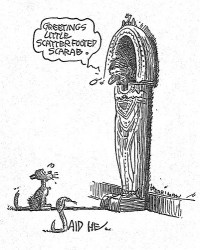 In 1971, John Wilson directed an animated feature starring the voices of Channing and Brackett and using the songs from the musical. The love affair between Archy and Mehitabel was penned by Archy, the cockroach; his poems tell their story.
In 1971, John Wilson directed an animated feature starring the voices of Channing and Brackett and using the songs from the musical. The love affair between Archy and Mehitabel was penned by Archy, the cockroach; his poems tell their story.
The film suffers from its music. The songs are simple and sound as if they’re written for children, but the lyrics pull from the poems which are definitely designed for adults. It gets a bit confusing, as a result, and is a bit picaresque; the poems are short and illustrating them in animation would take more adaptation than seen here.
 John Wilson had developed his studio, Fine Arts Films, on the back of the weekly, animated, music videos he did for The Sonny and Cher Show, an enormous hit in the early 70s.
John Wilson had developed his studio, Fine Arts Films, on the back of the weekly, animated, music videos he did for The Sonny and Cher Show, an enormous hit in the early 70s.
These music videos were loose designs animated quickly and lively around the songs Sonny & Cher would schedule each week. There would always be one or two of these pieces, and they were highlights in the weekly one-hour musical/variety program.
 The graphics of Shinbone Alley aren’t too far from these Sonny & Cher videos. Loose design and animation with a design style not too far from the Fred Wolf’s made-for-ABC feature, The Point. This was the first feature made for television and featured the songs and story of Harry Nilsson, although Shinbone Alley featured a wilder color pallette.
The graphics of Shinbone Alley aren’t too far from these Sonny & Cher videos. Loose design and animation with a design style not too far from the Fred Wolf’s made-for-ABC feature, The Point. This was the first feature made for television and featured the songs and story of Harry Nilsson, although Shinbone Alley featured a wilder color pallette.
Jules Engel, Corny Cole and Sam Cornell all worked in design on the film. The long list of  animators included Barrie Nelson, John Sparey, Spencer Peel, Eddie Rehberg and Jim Hiltz. Mark Kausler was an assistant on the show.
animators included Barrie Nelson, John Sparey, Spencer Peel, Eddie Rehberg and Jim Hiltz. Mark Kausler was an assistant on the show.
The film wasn’t an enormous success, but that was probably explained much by the limited distribution and the poor marketing of the film. I saw the film when it came out; I was living in Washington DC at the time (in the Navy). I was very disappointed. The animation is very limited and the style was a real let-down having known the George Herriman illustrations from the Don Marquis book. We’d already seen those limited animation Krazy Kat cartoons from King Features, so I knew the style could be done adequately – even on a budget. The style in this film just seemed a little too Hollywood cute, at the time, and it felt dated when it came out. I don’t feel too differently about it watching the VHS copy I own.

the film’s poster
Here are some frame grabs from the first 1/4 of the film:
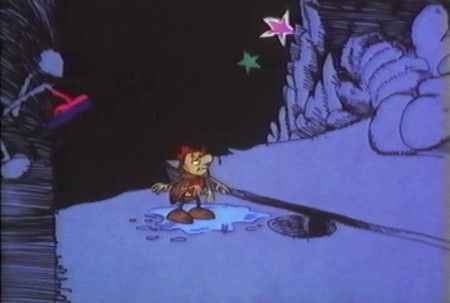
We’re introduced to Archy right off the bat as he
flies out of the river onto the dock. He realizes that he,
the poet, tried to kill himself and was sent back as a cockroach.

He soon finds a typewriter and goes straight back to work.

Mehitabel is a performer – with Carol Channing’s voice.

She has another boyfriend, voiced by Alan Reed,
who is also the voice of Fred Flintstone.

A song video takes us outside.
6.
- This final post featuring the work of John Wilson and his company, Fine Art Films, covers many varied film projects. Unfortunately, I found relatively few images available for posting especially considering the amount of film done.
The Sonny and Cher Show was a long running Variety program on television in the 70s. Most weeks featured an animated music video as done by John Wilson. Some examples of this include:

Helen Reddy’s song “Angie Baby”

Joni Mitchell’s “Big Yellow Taxi”
Fine Arts Films also did some movie titles and trailers. We saw, recently, the long theatrical trailer done for Irma La Douce. Here are a few stills done for the main title sequence for the 1978 musical, Grease.

storyboard sketch for Grease.
Produced and Directed by John Wilson
Story and Layout by Chris Jenkyns
Music by Barry Gibb
John Wilson also directed a number of short films which appeared on television on the NBC program, “Exploring” between 1964-1966.

“Casey At the Bat”
Narrated by Paul Frees
Finally, for MTV’s “Liquid Television” in 1992 John Wilson directed some of the 10 episodes of a series called “The Specialists.”
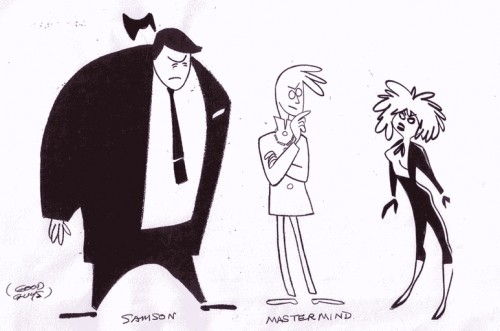 1
1
Go here to see other episodes.
Commentary 22 Jun 2013 03:11 am
A Week that Was
Academy Screenings have come at us this Summer in a hot and heavy fashion. I can’t say that all the films are worth watching, but then you’ll get a week like this where there were several positive adventures as opposed to last week when you had duds on top of duds.
On Tuesday, Brad Pitt came to us in 3D with World War Z. Quite some time ago, I had read that it was a film about Zombies and had forgotten. If I’d remembered I wouldn’t have gone to see the movie, and I might have been sorry. The story is a bit simplistic, but the metaphor is a good one. People, for some medical reason gone awry, turn into killers destroying each other, by bite, without reason. From the first 10 minutes in the film, right to the end I was sitting on the edge of my seat. The tension was formidable.
It was basically about Brad Pitt trying to save his family and in doing so resolve the problem for the world. It all seemed possible (given all the horrendous medical mishaps we’ve seen – from AIDS to Avian Flu to whatever else we could imagine.) Pitt’s one of the only actors I can think of who can relay confidence as a father to his two daughters (and a boy they pick up along the way) as well as a leading consultant working for the UN. The story resolves things in the way Mr. Pitt would like to see. A positive and hopeful ending.
Having seen Superman (Man of Steel)a week ago, it was good to see something with more heft on its mind than aliens.
Monsters University was a piece of garbage that could have stayed on the shelf. More like one of those Disney reworks (Remember: Bambi 2, Peter Pan 2, Aladdin 2, Pocahontas 2, Lady & The Tramp 2 et. al.) This thing, Monsters University, was a total piece of waste. At least the other 2D animated films had originals worth trying to live up to. It’s a tough chore to compete with the original Bambi that the off shore studio tried hard. The original Monsters Inc. was easy to compete with. Nothing to do with the art of animation and all to do with padding Disney’s pockets. (Coming up next week is Despicable Me 2. Who cares? I couldn’t make it through the original.) Pixar, doing Monsters Inc and now Monster U, should be ashamed of this work.
The Attack was an Arabic film that capitalized on the endless war between their two cultures. The 100% rating for The Attack might have been more deserving of half that.
So far, too many battles this summer. All tedium.
Same Old Sad Song
Back in 1955 I was nine years old. There were five kids in my family (including me and an older sister who never would’ve hung out with the rest of us.) Up the block was a larger family of cousins – all girls (at the time). Lady and the Tramp was opening, I wanted to see it on opening day – a Wednesday, and there was no stopping me. In the end, it meant I was supervising 7 kids if I wanted to see this film on it’s first Manhattan screening.
My mother had give me enough for the 8 admissions: 15 cents each for admission ($1.20) plus cash for popcorn & sodas. I had it all worked out and was set to buy something for every one. But the theater got smart! They raised admission for anyone under 12.($.25 cents!) Now, instead of being $1.20 for all of us to get in, it’d cost TWO DOLLARS for admission. We had enough to get in, but forget the candy. There wasn’t enough.
I explained it to my siblings and my cousins. My big fat, old-enough-to-know-better cousin started crying while we waited on line. We needed another quarter, and we could all share popcorn. How was I gonna get that! We were on line and she wouldn’t shut up.
I just wanted to see the movie. I didn’t care about candy or popcorn. Yet the fake-ish crying got louder. They were starting to sell tickets.
The theater manager came over to me to ask what was wrong. When I said we didn’t have enough, he thought I meant admission. He had to stop the crying. It was bad promotion for opening day at his theater. He gave me a dollar!
We suddenly had enough candy and popcorn for all of us, and we had no trouble getting into the theater in plenty of time with lotsa extras. The only problem was that my cousin was hooked onto her crying and she wouldn’t let up on it.
In the end, we saw the movie, ate the candy and had a good time. Of course, before we left, that same cousin had lost her glasses and she started crying again until we found them.
That big wide C i n e m a s c o p e screen. It was great, and I refused to ever go to a theater with my cousin again. I figured out a way to go again the next day with just my younger sister. We sat through Lady & the Tramp twice.
Nowadays, you’d have to put half those kids up for adoption to get enough for entrance and popcorn and 3D glasses. And the movie wouldn’t be as good. (See Monsters U about that one. They didn’t even offer 3D version to the Academy members; that’s how much it mattered.)
New Old Favorites from John Canemaker
Recent news I got from John Canemaker was that they are going to republish all of his Disney art books with a fresh approach. I believe they’ll be doing one book a year with The Art and Flair of Mary Blair to be the first to be published anew. It will have better color matching supervised by the Disney archives to equal the originals by Mary Blair.
The second book from the Canemaker canon to go this route will be Walt Disney’s Nine Old Men and the Art of Animation. In the end all of his great books should look fresh and bright, possibly even better published than the originals.
For once a publisher does a positive service to the history of the medium.
Speaking of which, I’m reading John’s Paper Dreams for the first time. It’s a pretty fabulous book, and I’ll have a lot to say when I finish it this coming week.
More on Mogubgub
Ed Grant on his site, MediaFunhouse, has devoted some space to the late Fred Mogugub. The material in the article seems to have been culled from work written by Mogubgub;s friend, Richard O’Connor as well as from my site.
The rehash is worth the reread; I can assure you. Artists need to be recognized.
James Gandolfini
At only 51, James Gandolfini (center above) seems to have left us. Thank god for The Sopranos. That show gave us a clue as to was a fine actor he was. I’m unable to turn on an episode, and episode and to quit so quickly thereafter. I feel compelled to watch the entire show regardless of the fact that I’d seen it many times already. Like a great movie, not a TV show.
As it happens, in the past year I seem to have run into Gondolfini more than my fair share of times. Twice I saw him with other “Soprano” members at David Chase events and three times I saw him at HBO events which celebrated documentaries about to be aired. I am amazed at how fit he looked all those times that I’d seen him. He was an actor who carried some weight (I don’t mean physically but dramatically), someone I would have cast in a moment’s notice no matter what I was filming. He was a talent to be reckoned with, someone who’d have brought real character to your film.
